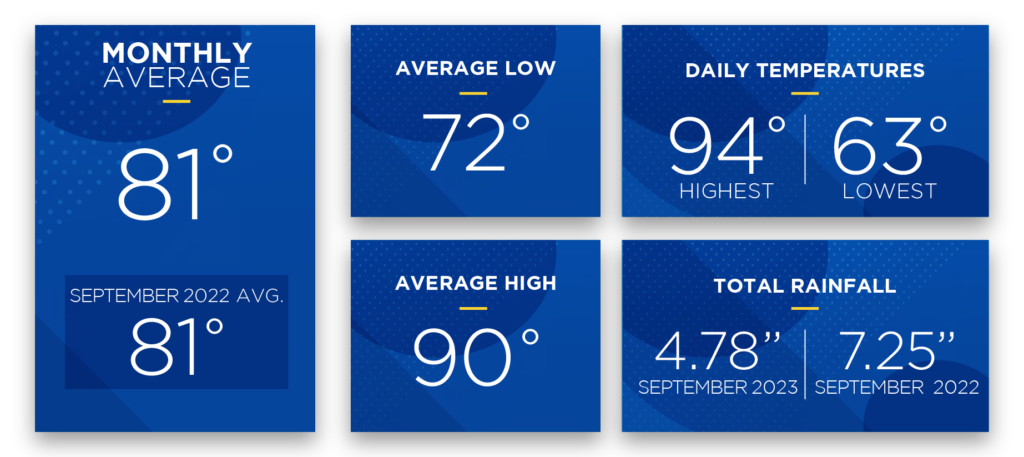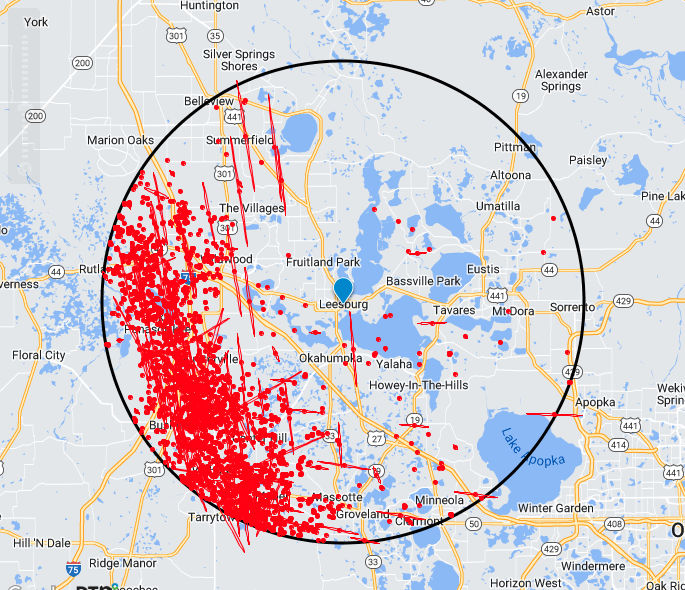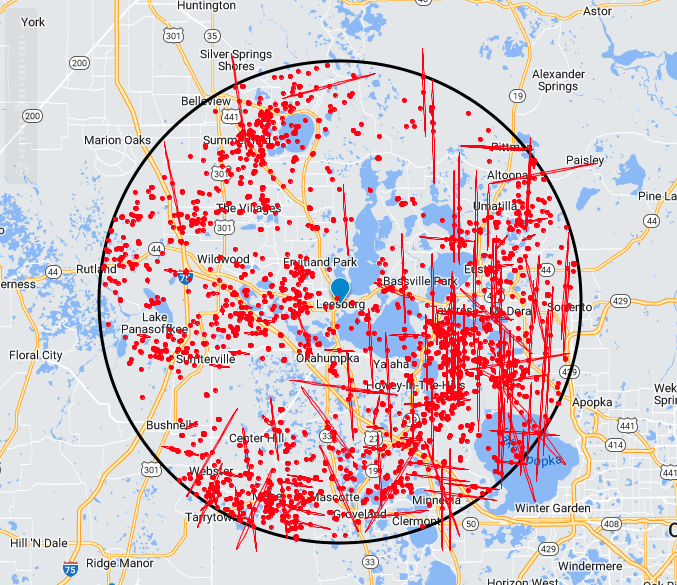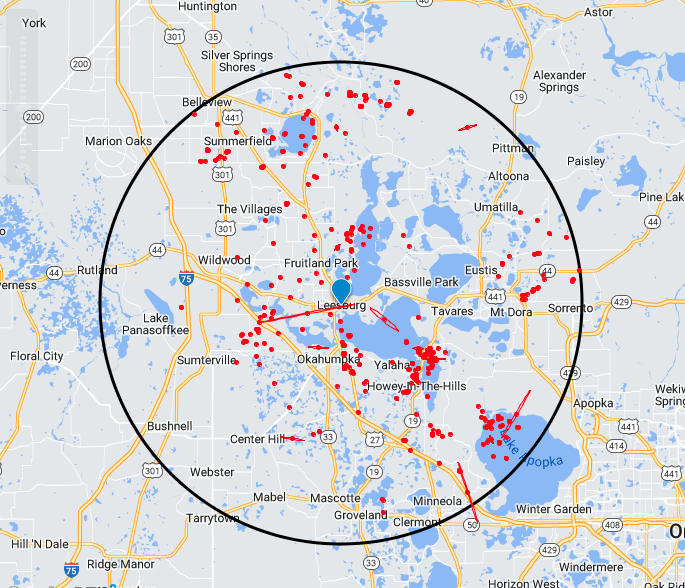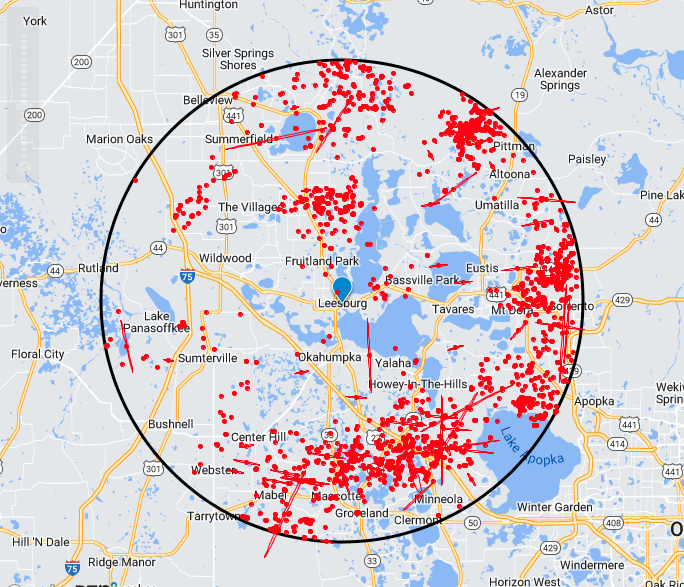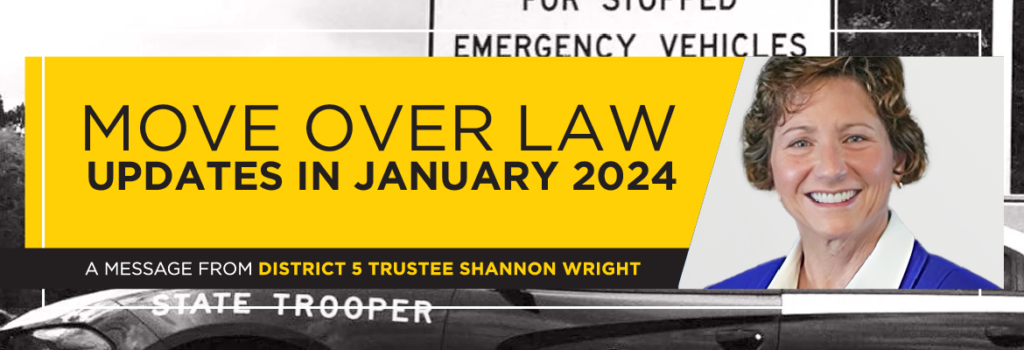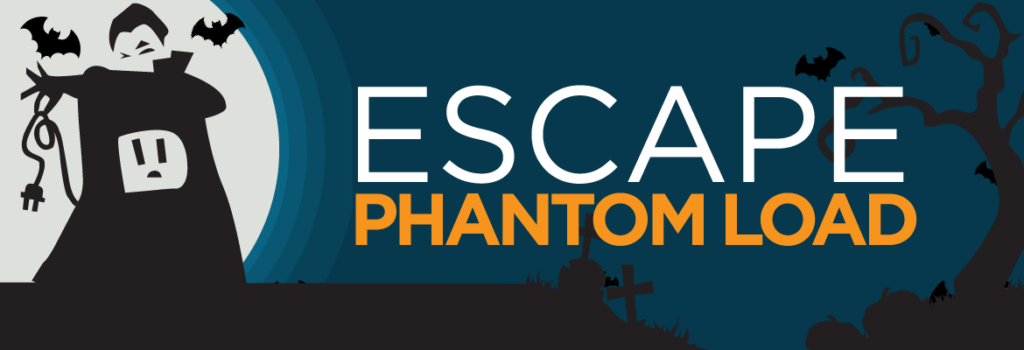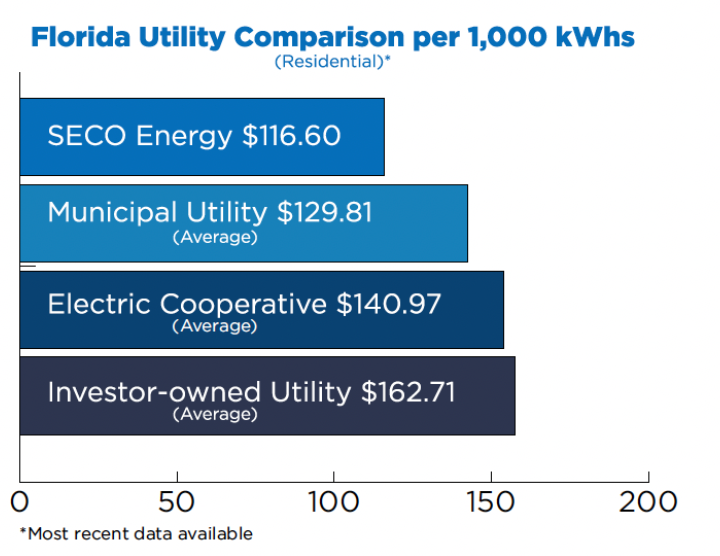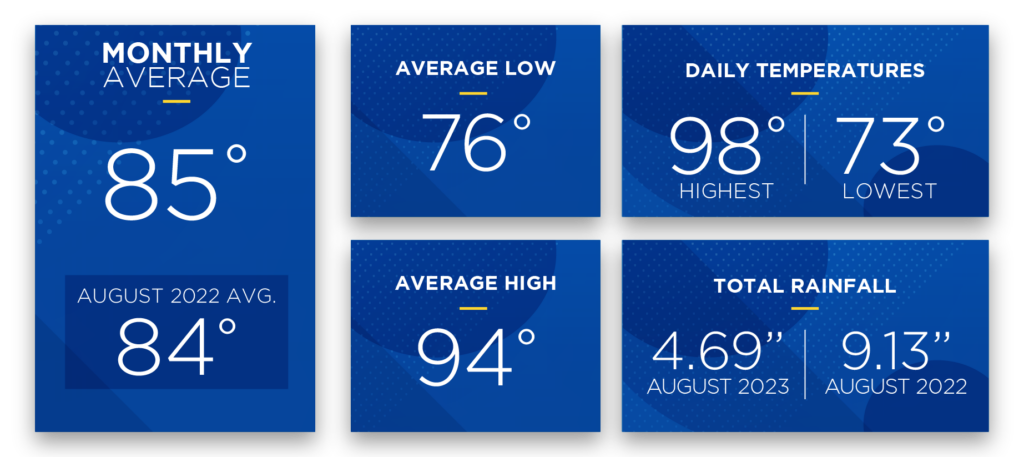 Dear Members,
Dear Members,
At SECO Energy, our commitment to serving our members goes beyond providing safe, reliable and affordable electricity to homes and businesses across Central Florida. We are proud to announce that the SECO Energy Board of Trustees has approved a Capital Credits retirement of $2.01 million to current and former members. Current members will see the credit on their November billing statement and former members receive a check.
Capital Credits are distinct to cooperatively formed businesses like SECO Energy, and they are the true cooperative difference. SECO customers are members; they are partial owners of the cooperative. This ownership structure is a foundational part of the cooperative business model, and it allows us to utilize unretired capital to invest in facility improvements while ensuring that our members receive a return of member-furnished capital.
After covering our operating costs and expenses, SECO Energy reclasses the prior year’s excess revenues as Patronage Capital. The margins are then allocated pro-rata to each member’s account as capital credits. Your individual Capital Credit allocations represent the percentage of the annual amount of electric service purchased by you.
SECO Energy has a strong tradition of returning Capital Credits to our members. In fact, we have retired nearly $83 million to our membership over the years. Almost $50 million has been retired in the last decade alone. This represents a significant commitment to our members and communities, and it exemplifies the benefit of cooperative membership.
Our Board of Trustees plays a crucial role in the retirement of Capital Credits. They review the financial position of the cooperative, consider management’s recommendation, and determine the approval of the Capital Credits return. This process ensures transparency and accountability in how we allocate these funds to our members.
The retirement of $2.01 million in Capital Credits is a testament to SECO Energy’s ongoing commitment to our members. We are proud to be a cooperative, not-for-profit electric provider, and we will continue to serve our communities with dedication and integrity.
SECO members are at the heart of everything we do, and we look forward to providing you with reliable electricity and the benefits of being part of our cooperative family. Your satisfaction and well-being are our top priorities.
Best regards,
Curtis Wynn
Chief Executive Officer
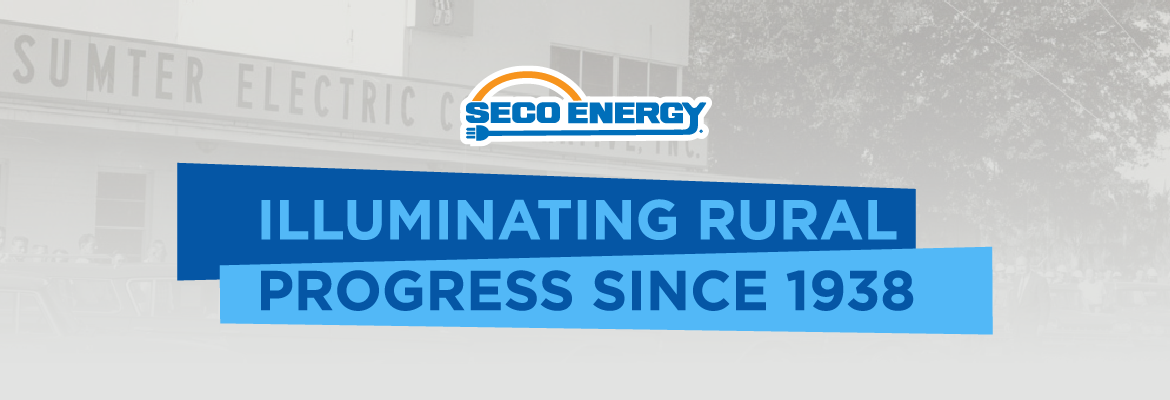
Electrifying rural America is a testament to the transformative power of ingenuity, cooperation and a shared vision for progress. Sumter Electric Cooperative, Inc. (now d/b/a SECO Energy) embarked on its journey in 1938 to provide rural Central Florida residents with essential electric service. Through its dedication to this mission, the not-for-profit cooperative has illuminated homes and businesses and played a pivotal role in fostering economic growth, improving living standards and creating opportunities for countless individuals. SECO Energy was born from the ideals of the Rural Electrification Administration (REA) era, and it continues to shine brightly today, serving more than 230,000 homes and businesses in its seven-county service area.
The Genesis of Rural Electrification and Birth of Sumter Electric Cooperative
The Great Depression was characterized by economic hardship and widespread unemployment. In response, President Franklin D. Roosevelt’s New Deal introduced several initiatives to revitalize the nation, including creating the REA in 1935. The REA was a visionary program that sought to bring the benefits of electricity to rural areas that had long been left in the dark by investor-owned and municipal utilities that calculated electric expansion was too expensive.
SECO’s history is entwined with the REA’s electrification movement. In 1937, volunteers traveled door-to-door to personally visit residents and encourage cooperative membership. This grassroots approach exemplified the idea that every American, regardless of their geographic location or economic status, deserved access to the benefits of electricity. In 1938, one volunteer, Ray Robbins, was hired as SECO’s first employee.
Safe, Reliable and Affordable Electricity
In our 85-year history, we have grown from a small rural utility to a local, award-winning cooperative of the future. Today, our service area includes urban and rural areas. We continue to provide safe, reliable and affordable electric service to homes and businesses in our communities. Our roots are humble, but our future is mighty.
SECO continues to invest substantially in its infrastructure to maintain safe and reliable service amid Central Florida’s rapid growth. Access to affordable electric service improves residents’ daily lives. It facilitates economic growth by making it more feasible for businesses to operate in our service area.
SECO’s contributions to local economies in its 85-year history are substantial. In earlier years, farmers gained access to modern tools and equipment, which increased agricultural productivity. Small businesses thrived, benefiting from the availability of electric power. This growth, in turn, created employment opportunities.
Growth in our service area is rapid – commercial development, expansion of residential communities and large hubs are being built to support logistics. Not surprisingly, SECO has continued as well, and today employs over 400 of your friends and neighbors to support and expand its operations and infrastructure.
Beyond the tangible economic benefits, SECO plays a vital role in empowering the communities it serves. Access to electricity is essential for healthcare advances, educational opportunities and worldwide connection. The cooperative actively engages with its members, offering education and support about electrical safety, energy conservation and innovative energy services.
Looking to the Future
According to the National Rural Electric Cooperative Association (NRECA), cooperatives like SECO Energy serve 56% of the nation’s landmass, which includes 42 million people and 21.5 million businesses. The energy industry has changed since 1938, and SECO is evolving too. The not-for-profit cooperative business model is alive and well. We are committed to providing our members with safe, reliable, affordable electric service and innovative energy offerings.
We would hardly recognize the Central Florida of just 85 years ago. SECO’s story is one of cooperation, determination and progress. Our dedication to our members and communities is unwavering as we and the energy industry evolve. SECO Energy’s future is bright!
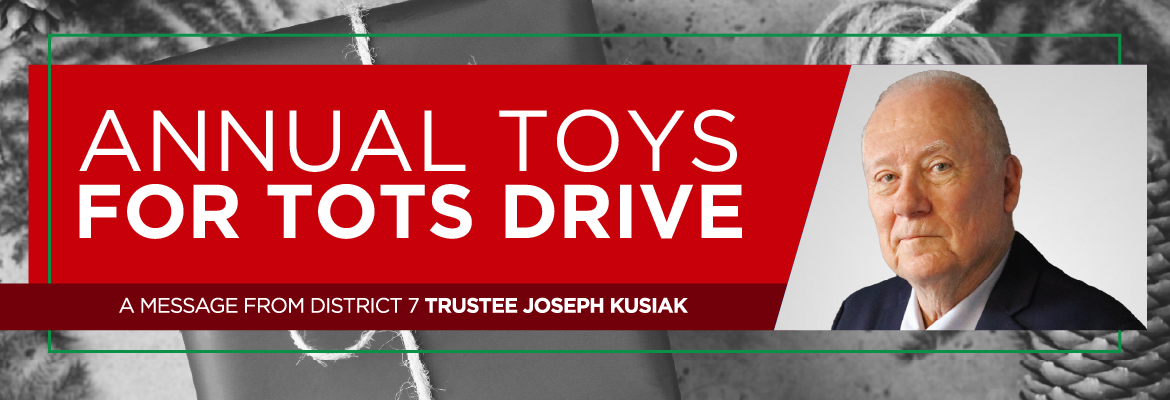
Join SECO Energy employees in spreading the joy of Christmas for children in our local communities. Each year, our employees donate new, unwrapped toys for SECO’s Toys for Tots drive.
Members can donate, too, visit one of our five Member Services Centers in Eustis, Groveland, Inverness, Ocala and Sumterville to donate a toy. The public drop-off period lasts from NOVEMBER 1 TO DECEMBER 2.
Retired Marines and other volunteers operate Toys for Tots and pick up donations to distribute in the local area where they were collected. Members who want to register to receive toys donated through Toys for Tots can visit ToysforTots.org > Request a Toy.
HELP SECO FILL SANTA’S SLEIGH WITH TOYS FOR TOTS DONATIONS THIS YEAR!

For the safety of our members and community, please do not use SECO Energy’s light posts and poles to display holiday decorations or any other items. Decorative poles are not rated for the added weight of lights, decorations, sports equipment or banners.
Do not affix lights, signs, advertisements or banners to any SECO poles. Nailing, stapling, or tacking items to power or decorative poles accelerates wear and degrades their structural integrity and can potentially harm or puncture the protective equipment of our employees and contractors. Moreover, the pole’s ground wire can be damaged, leading to operational issues.
THE SAFETY OF OUR MEMBERS IS PARAMOUNT. We do not want anyone to be injured while hanging lights or decorations from a pole that was never intended to support the weight of such items or a ladder leaned against it.
We appreciate your understanding and cooperation in maintaining a safer environment for all members. Read more about pole safety requirements at SECOEnergy.com > Safety > Keep It Clear.
Read the full November 2023 SECO News.
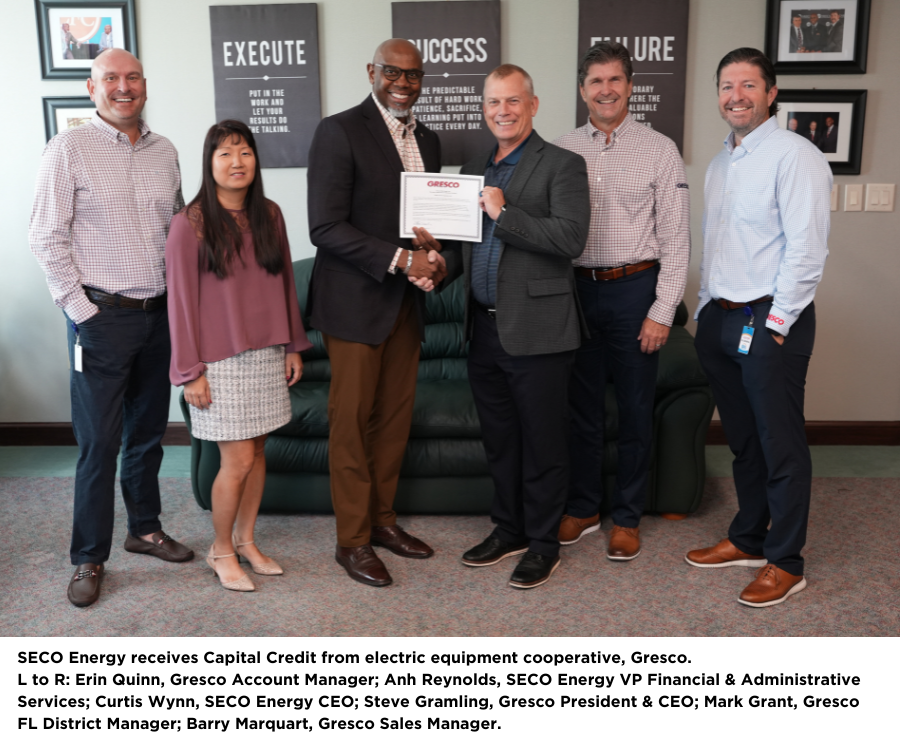



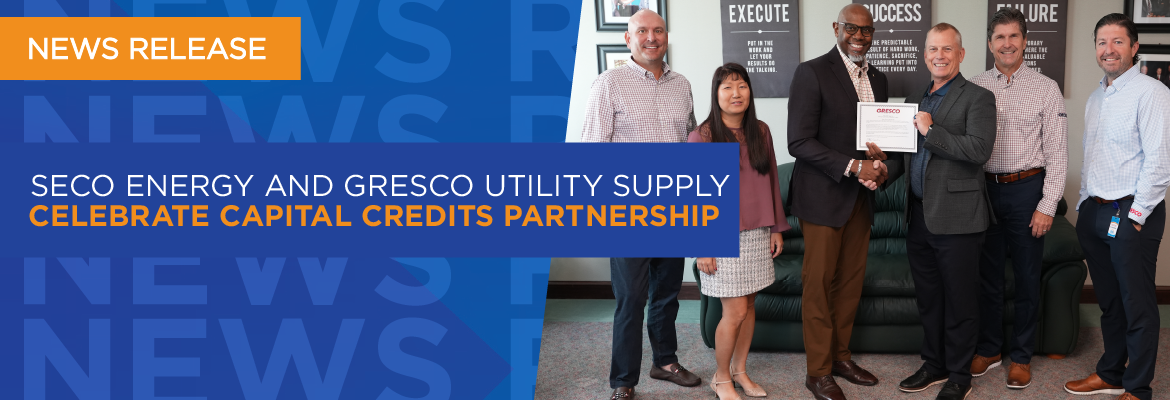

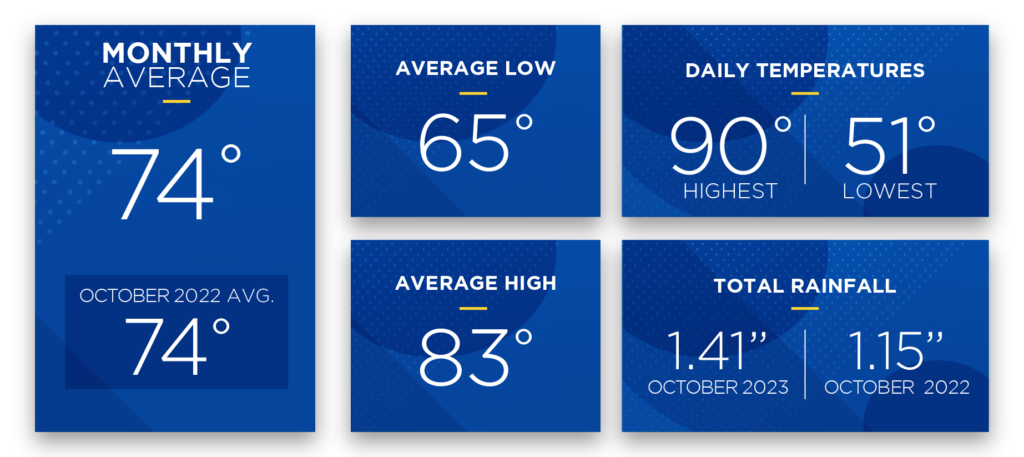
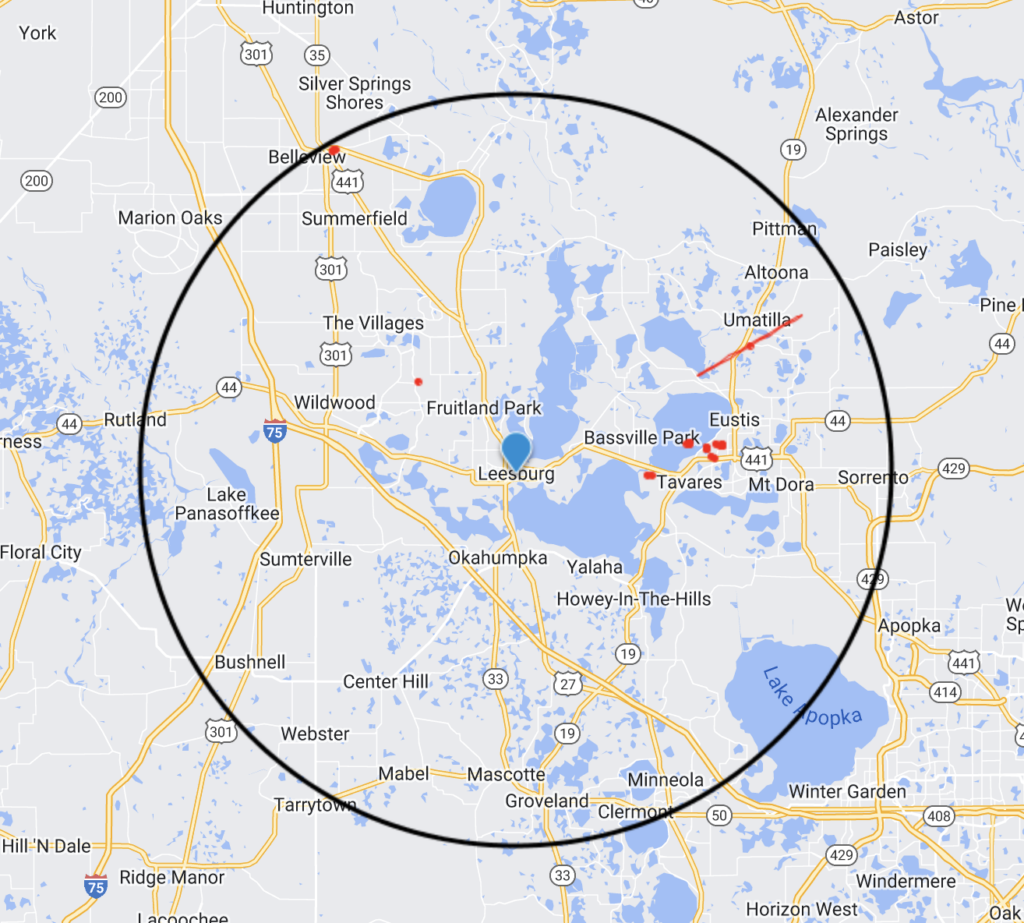
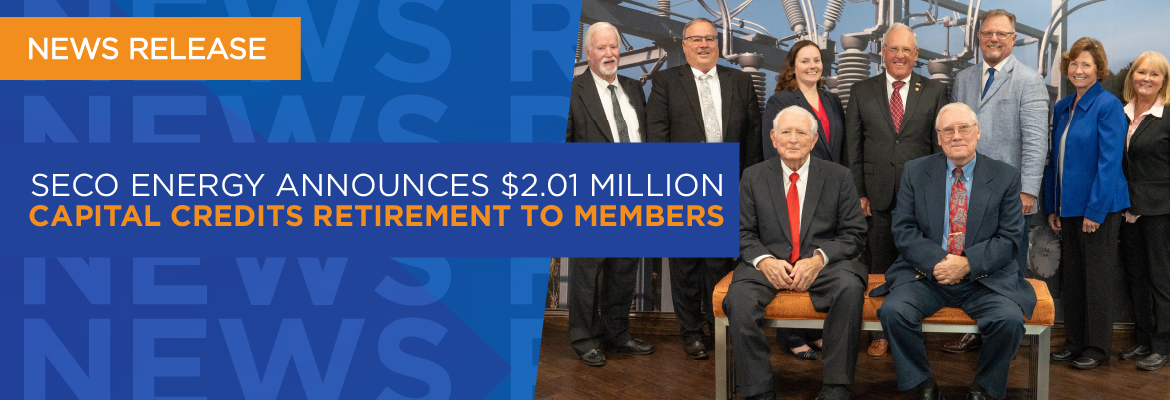
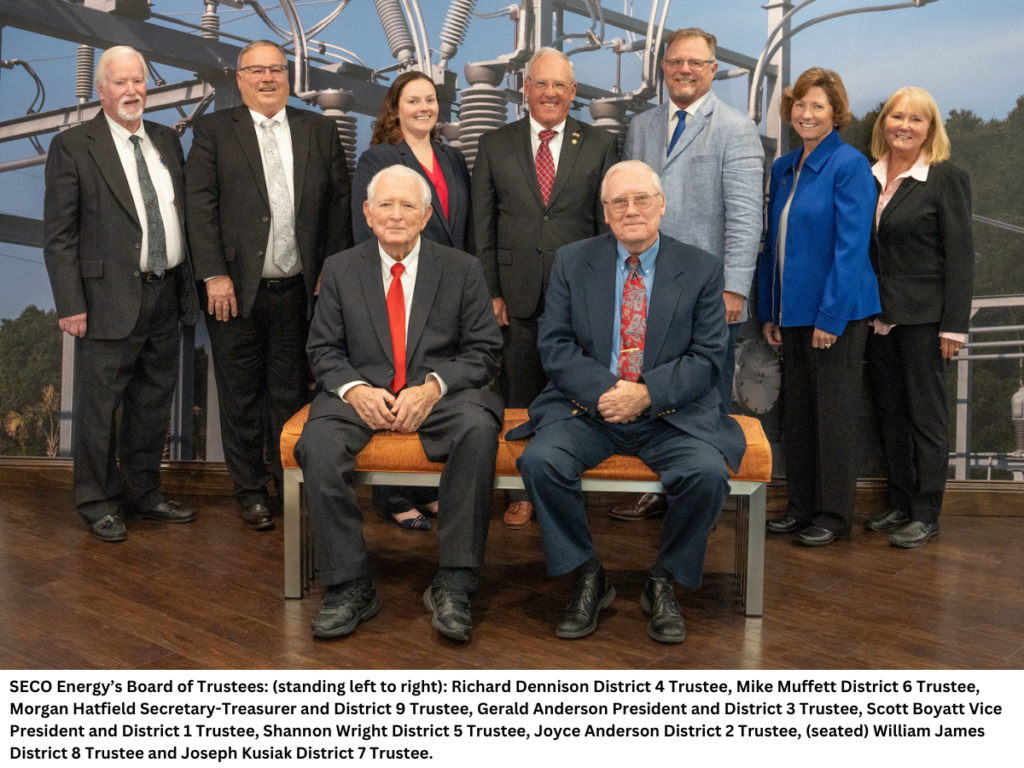 CEO Curtis Wynn remarked, “SECO Energy has a strong tradition of returning Capital Credits to our members. In fact, we have retired nearly $83 million to our membership over the years, with almost $50 million retired in the last decade alone. This represents a significant commitment to our members and communities and exemplifies the cooperative principle of member benefit.”
CEO Curtis Wynn remarked, “SECO Energy has a strong tradition of returning Capital Credits to our members. In fact, we have retired nearly $83 million to our membership over the years, with almost $50 million retired in the last decade alone. This represents a significant commitment to our members and communities and exemplifies the cooperative principle of member benefit.”
 Dear Members,
Dear Members,


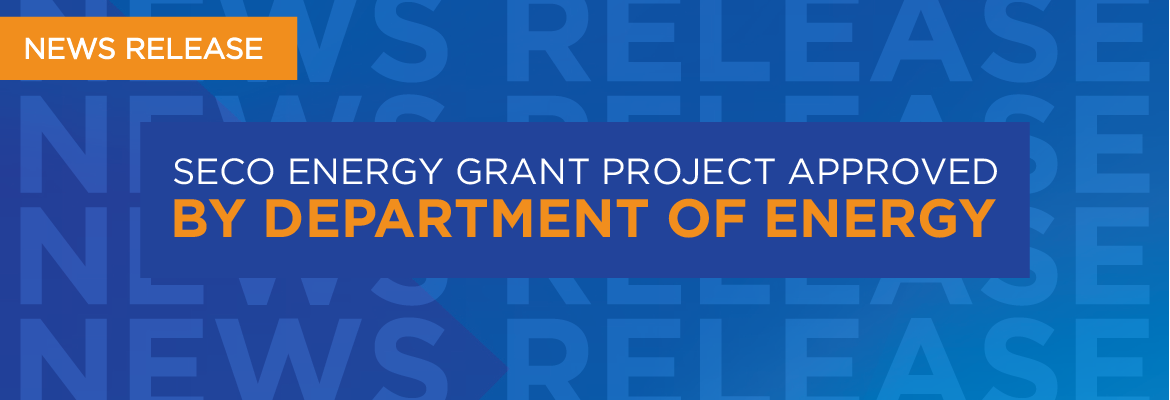
 SECO Energy’s proposed project will enhance resilience by undergrounding overhead utility lines, hardening existing poles and increasing line capacity, replacing aging inefficient equipment and expanding load capacity with a new distribution substation.
SECO Energy’s proposed project will enhance resilience by undergrounding overhead utility lines, hardening existing poles and increasing line capacity, replacing aging inefficient equipment and expanding load capacity with a new distribution substation. 
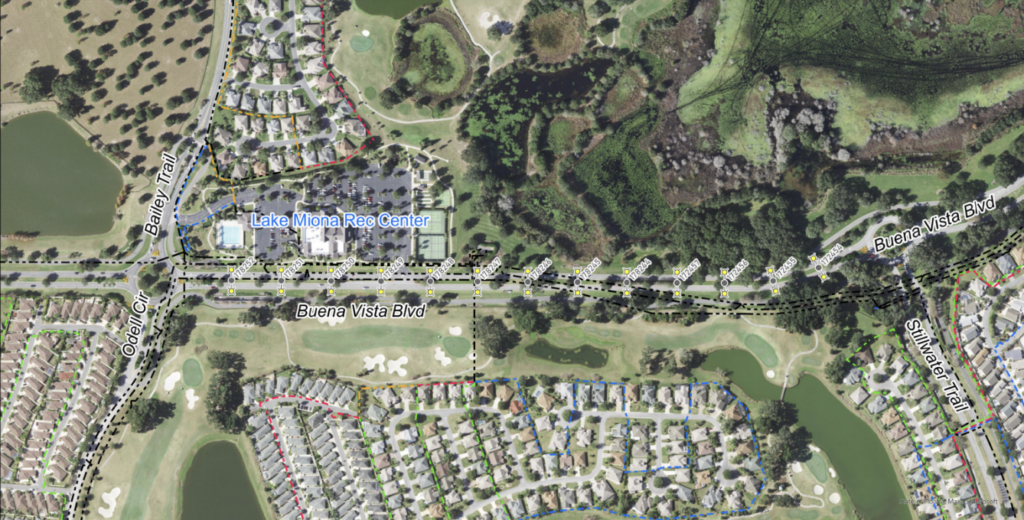 The majority of roadway lighting in The Villages is high-pressure sodium (HPS), which is quickly becoming an outdated product. LED lighting is the more energy-efficient choice. Most SECO Energy members are gradually switching over to LED bulbs and fixtures in their homes. As HPS fixtures are being phased out in favor of LED equivalents, there are benefits to the switch. LEDs use less energy than traditional HPS fixtures and carry a longer lifespan.
The majority of roadway lighting in The Villages is high-pressure sodium (HPS), which is quickly becoming an outdated product. LED lighting is the more energy-efficient choice. Most SECO Energy members are gradually switching over to LED bulbs and fixtures in their homes. As HPS fixtures are being phased out in favor of LED equivalents, there are benefits to the switch. LEDs use less energy than traditional HPS fixtures and carry a longer lifespan.

